Today: Introduction to dynamic problems#
Tom Ranner

Static vs dynamic problems#
Examples so far have focussed on static problems that don’t change in time:
Static vs dynamic problems#
There are many other problems that require models to change in time, that is the models are dynamic:
Rates of change#
Suppose we know that a person is walking at constant 3 meters per second (m/s) - what does that mean?
So how far will they travel in:
\(0.1\) seconds?
\(0.01\) seconds?
\(0.001\) seconds?
\(10^{-6}\) seconds?
What does this tell us about speed?
That is, $\( \text{speed} = \dfrac{\text{distance travelled}}{\text{time}} \)$
Equivalently, $\( \text{speed} = \dfrac{(\text{distance at end}) - (\text{distance at start})}{\text{time}}. \)$
The derivative as a rate of change#
What if the object’s speed was not constant? For example, \(S(t) = -(t-1.0)(t+0.5)\).
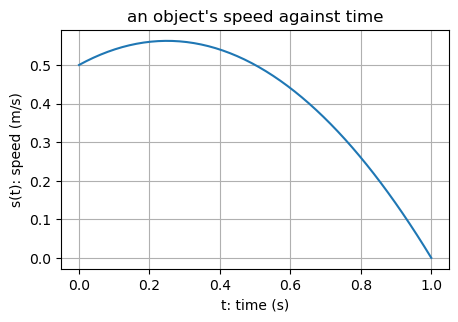
How far would the object travel in one second now? – with difficulty :(
We could consider each tenth of a second separately and estimate the distance covered at each tenth (assuming the \(s\) is approximately constant in each interval):
D, t = 0.0, 0.0
for i in range(10):
D = D + 0.1 * S(t)
t = t + 0.1
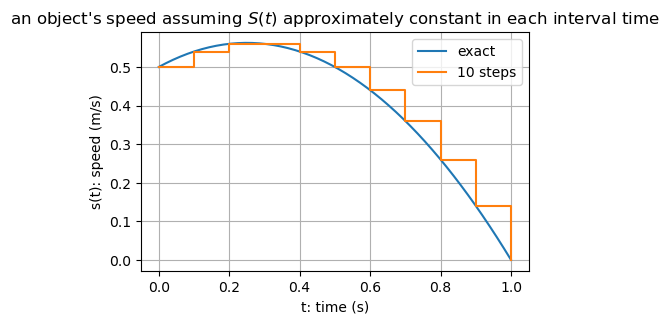
We could consider each hundredth of a second separately and estimate the distance covered at each hundredth (assuming the \(s\) is approximately constant in each interval):
D, t = 0.0, 0.0
for i in range(100):
D = D + 0.01 * S(t)
t = t + 0.01
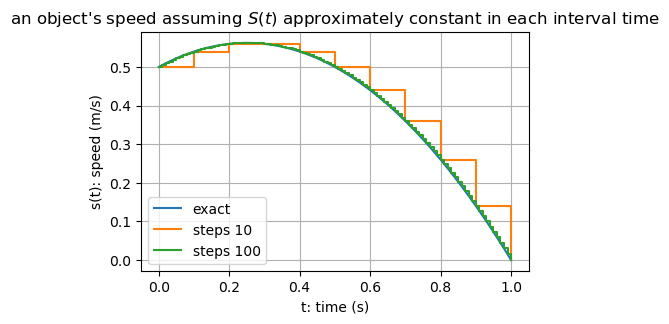
We could consider each thousandth of a second separately and estimate the distance covered at each thousandth (assuming the \(s\) is approximately constant in each interval):
D, t = 0.0, 0.0
for i in range(1000):
D = D + 0.001 * S(t)
t = t + 0.001
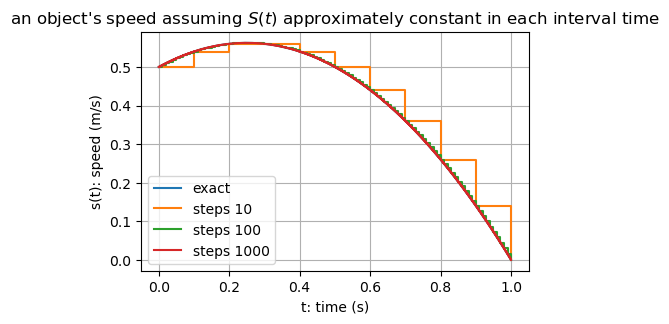
What values do we get?#
| # intervals | increment size dt | total distance | |
|---|---|---|---|
| 0 | 10 | 0.100000 | 0.440000 |
| 1 | 100 | 0.010000 | 0.419150 |
| 2 | 1000 | 0.001000 | 0.416916 |
| 3 | 10000 | 0.000100 | 0.416692 |
| 4 | 100000 | 0.000010 | 0.416669 |
… we appear to be converging to an answer in the limit as \(\mathrm{d}t \to 0\)…
So what’s going on#
At any instant of time, the speed is the rate of change in distance:
so
Mathematically speaking#
Call the speed \(S(t)\) and distance \(D(t)\):
In fact, to obtain a converged answer, we must take smaller and smaller choices for \(\mathrm{d}t\):
We say that speed, \(S(t)\), is the derivative of distance, \(D(t)\), with respect to time and write \(S(t) = D'(t)\).
A graphical interpretation#
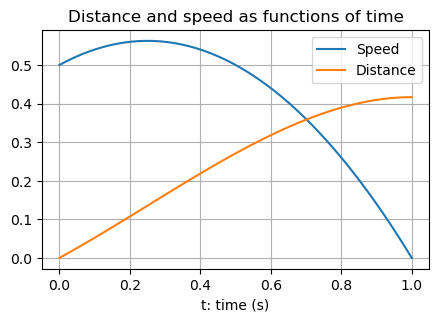
We see the gradient (slope) of the orange curve is the value of the blue curve.
The derivative as a gradient#
What is the gradient of a line?
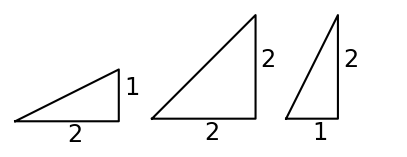
The equation of a straight line with slope \(m\) is given by
Slope of a curve#
What is the gradient of a curve?
Well… the gradient of the straight-line approximation (chord) for a small step is
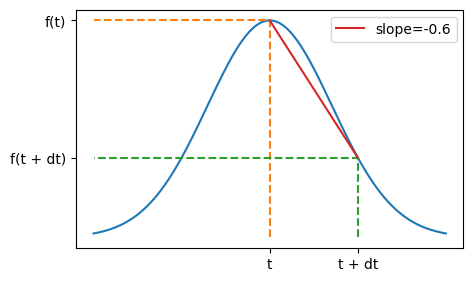
What about reducing \(\mathrm{d}t\)?
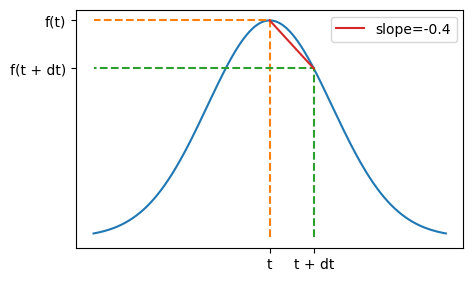
Even more?
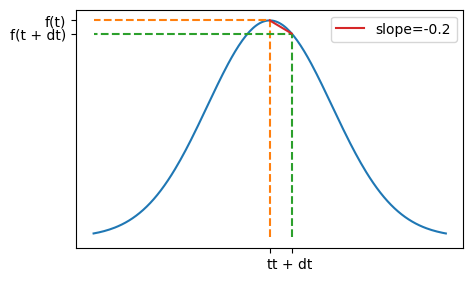
By taking smaller and smaller values of \(\mathrm{d}t\), it becomes clear that we can assign an instantaneous value to the slope at any point \(t\):
But this is precisely the definition of derivative \(y'(t)\)!
Do you feel more confident?#


